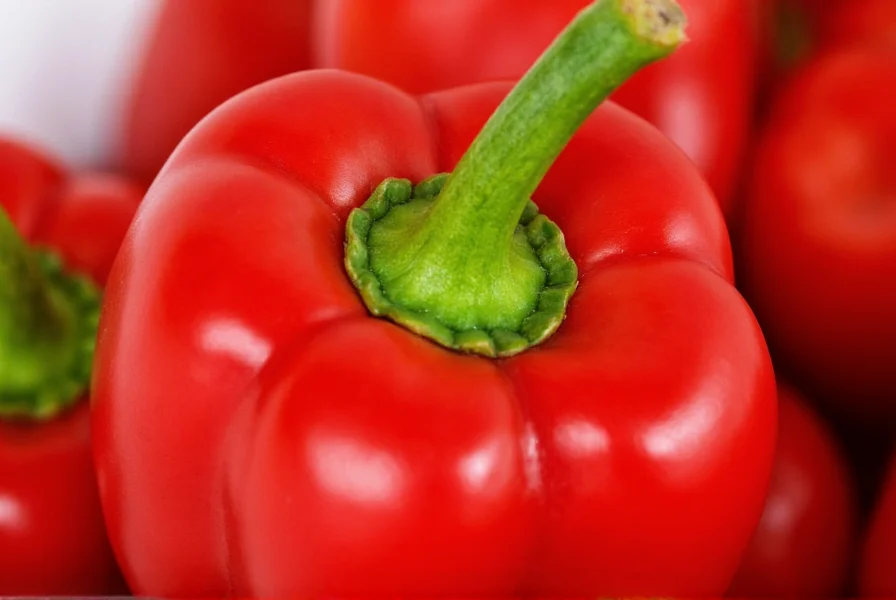Understanding the anatomy of chili peppers goes beyond just recognizing their heat level or color. The “other side”—specifically the calyx end—plays a significant role in cultivation, identification, and culinary applications. While most people focus on the pointed tip of chili peppers, the calyx end provides valuable information that both gardeners and chefs can leverage.
What Exactly Is the Calyx End of a Chili Pepper?
The calyx is the green, star-shaped structure at the stem end of all chili peppers. Formed from the flower’s sepals, this protective covering remains after pollination and fruit development. Unlike the smooth, tapered tip of the pepper, the calyx end features a distinctive five-pointed star pattern when viewed from above. This structural difference between the two ends serves important biological functions.

Why the Calyx End Matters for Gardeners
For growers, recognizing the calyx end is essential for proper harvesting techniques. When picking chili peppers, you should cut the stem just above the calyx rather than pulling the fruit off the plant. This preserves the calyx structure and prevents damage to both the pepper and the plant. Damaged calyxes can lead to premature spoilage and increased susceptibility to pathogens.
Additionally, the condition of the calyx provides valuable maturity indicators. A bright green, firm calyx typically signals a younger pepper, while a slightly browned or withered calyx may indicate full ripeness. Some heirloom varieties even display unique calyx characteristics that help distinguish them from similar-looking peppers.
Practical Implications for Culinary Use
Chefs understand that the calyx end isn’t just structural—it affects flavor distribution and preparation. The vascular bundles concentrated near the calyx transport capsaicin (the compound responsible for heat), meaning this area often contains higher concentrations of heat compounds than the tip. When preparing milder dishes, removing seeds and membranes near the calyx can significantly reduce spiciness.
Professional cooks also utilize the calyx end for presentation purposes. When stuffing peppers, they typically cut from the calyx end to maintain the pepper’s natural shape. The calyx also serves as a convenient handle when charring peppers over open flames, allowing for safer manipulation without direct contact with hot surfaces.
Identifying Pepper Varieties by Their Calyx Characteristics
Experienced growers and chili enthusiasts use calyx features to distinguish between similar-looking varieties. Consider these identifying characteristics:
| Pepper Variety | Calyx Color | Calyx Shape | Distinctive Features |
|---|---|---|---|
| Jalapeño | Medium green | Slightly flared | Smooth edges, minimal lobing |
| Habanero | Dark green | Pronounced lobes | Deeply scalloped edges |
| Serrano | Light green | Narrow, tight | Almost no flaring |
| Bell Pepper | Pale green | Wide, flat | Distinctive four-lobed structure |
Common Misconceptions About Chili Pepper Orientation
Many home cooks operate under misconceptions about chili pepper anatomy. One prevalent myth suggests that the number of bumps on the bottom of bell peppers indicates sweetness—this actually applies to the calyx end of chili varieties as well. In reality, the number of lobes on the calyx primarily reflects the pepper’s genetic variety rather than its heat or sweetness level.
Another misconception involves storage techniques. Some believe peppers should be stored with the calyx end up to prevent moisture accumulation, but research shows orientation has minimal impact compared to proper humidity control. The calyx end does, however, provide a natural barrier against moisture loss when peppers are stored upright.
Advanced Insights: The Science Behind Pepper Asymmetry
The asymmetrical nature of chili peppers—with distinct calyx and tip ends—results from their botanical development. As members of the Solanaceae family, chili peppers develop from flowers with fused ovaries that elongate unevenly. The calyx end maintains connection to the plant’s vascular system, concentrating nutrients and capsaicinoids, while the tip develops as the primary growth point.
This biological asymmetry explains why certain preparation methods work better when considering both sides of the pepper. For example, when making chili oil, placing peppers calyx-end down in oil allows for more even infusion as the vascular channels facilitate compound transfer. Understanding this natural design helps optimize both cultivation and culinary applications.
Practical Applications Across Culinary Traditions
Global culinary traditions have developed specific techniques that leverage knowledge of both sides of chili peppers. In Mexican cuisine, cooks often leave the calyx intact when roasting fresh peppers, using it as a handle during the charring process. Thai chefs frequently remove the calyx end first when preparing bird’s eye chilies for curry pastes, as this area contains the highest concentration of heat compounds.
When preserving peppers through drying or pickling, the calyx end’s structural integrity becomes crucial. Peppers with intact calyxes maintain better shape during dehydration, while those with damaged calyxes may develop uneven drying patterns. For pickling, some traditional methods involve scoring the calyx end to allow brine penetration while keeping the pepper structurally sound.











 浙公网安备
33010002000092号
浙公网安备
33010002000092号 浙B2-20120091-4
浙B2-20120091-4